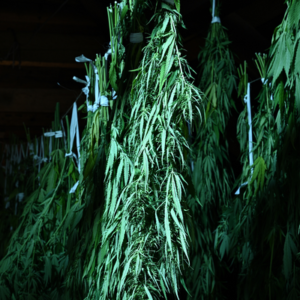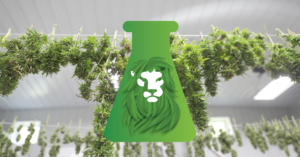The Importance of Proper Drying and Curing in Cannabis Cultivation
Drying and curing cannabis buds is an essential step in the cultivation process that helps to improve the overall quality and potency of the final product. When done correctly, drying and curing can enhance the flavor, aroma, and smoothness of the buds, as well as increase their shelf life. In this article, we will explore the importance of drying and curing cannabis buds, as well as how it can affect the results of cannabis testing.
 To begin, it is important to understand that cannabis plants are made up of a complex network of chemical compounds known as cannabinoids and terpenes. These compounds are responsible for the unique effects and flavors of different strains of cannabis, and they are produced in the trichomes of the plant. When a cannabis plant is harvested, the trichomes are still in a state of active metabolism, meaning that they are still producing and releasing these chemical compounds.
To begin, it is important to understand that cannabis plants are made up of a complex network of chemical compounds known as cannabinoids and terpenes. These compounds are responsible for the unique effects and flavors of different strains of cannabis, and they are produced in the trichomes of the plant. When a cannabis plant is harvested, the trichomes are still in a state of active metabolism, meaning that they are still producing and releasing these chemical compounds.
The drying and curing process is designed to slow down this metabolic process and allow the trichomes to fully mature. This is accomplished by carefully controlling the humidity and temperature of the buds as they dry, which helps to preserve the chemical balance of the plant. The process of curing, which typically involves storing the dried buds in airtight containers for several weeks or months, further allows the chemical compounds in the trichomes to continue to mature and develop their full potential.
How the Drying and Curing Process Affects Cannabis Testing
So, how does the drying and curing process affect the results of cannabis testing? One of the main ways that it can impact testing is through the levels of THC and CBD present in the buds. THC (tetrahydrocannabinol) is the psychoactive compound in cannabis that is responsible for the “high” that users experience. CBD (cannabidiol) is a non-psychoactive compound that is believed to have a variety of therapeutic benefits. The levels of THC and CBD in a cannabis sample are typically measured as a percentage of the total weight of the sample.
 During the drying and curing process, the levels of THC and CBD in the buds can change due to the continuing metabolism of the trichomes. As the buds dry, some of the THC and CBD may be converted into other chemical compounds, which can result in a lower overall percentage of these compounds in the final product. Curing the buds for an extended period of time can help to stabilize the levels of THC and CBD, ensuring that the final product is consistent and of high quality.
During the drying and curing process, the levels of THC and CBD in the buds can change due to the continuing metabolism of the trichomes. As the buds dry, some of the THC and CBD may be converted into other chemical compounds, which can result in a lower overall percentage of these compounds in the final product. Curing the buds for an extended period of time can help to stabilize the levels of THC and CBD, ensuring that the final product is consistent and of high quality.
Another factor that can be affected by the drying and curing process is the presence of contaminants such as pesticides and heavy metals. When cannabis plants are grown, they can be exposed to a variety of contaminants that can be harmful to human health if consumed. These contaminants can include pesticides that are used to control pests, as well as heavy metals that may be present in the soil or water used to grow the plants.
During the drying and curing process, some of these contaminants may be eliminated from the buds as they are exposed to heat and air. However, if the drying and curing process is not done properly, the contaminants may remain present in the final product. This can result in the product failing testing standards and being deemed unfit for sale or consumption.
In conclusion, drying and curing cannabis buds is an essential step in the cultivation process that helps to improve the overall quality and potency of the final product. By carefully controlling the humidity and temperature of the buds as they dry, and allowing them to cure for an extended period of time, cultivators can help to stabilize the levels of THC and CBD, as well as eliminate contaminants such as pesticides and heavy metals. Proper drying and curing can also help to enhance the flavor, aroma, and smoothness of the final product, making it more desirable to consumers. As a result, it is important for cannabis testing labs to consider the drying and curing process when analyzing the quality and potency of cannabis products. This can help to ensure that the results of the testing accurately reflect the true nature of the product, and that it meets the standards for safety and quality.
Cannabis Testing in Maine
In the state of Maine, where cannabis is legal for medicinal and adult use, it is important for cultivators, manufacturers, and testing labs to adhere to strict quality and safety standards to ensure that consumers are able to access high-quality cannabis products that are free from contaminants. By understanding the importance of the drying and curing process and how it can affect the results of cannabis testing, everyone in the cannabis industry can work together to ensure that the products available to consumers are of the highest possible quality.
Ensure the quality and potency of your cannabis products with the help of CATLAB, LLC, a trusted and reliable cannabis testing lab in Maine. Contact us today to learn more about our comprehensive testing services and see how we can help you meet all of your cannabis testing needs.

